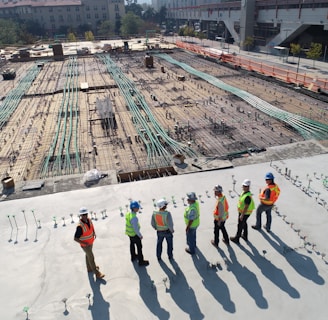Saudi Arabia’s New Shared-Housing Rules 2025 – Capacity Limits, Safety Standards, and Urban Guidelines
On 13 August 2025, Saudi Arabia introduced new shared-housing regulations setting capacity limits, safety standards, and modern urban planning requirements.
Raja Awais Ali
8/13/20252 min read


Saudi Arabia Introduces New Shared-Housing Regulations on 13 August 2025
On 13 August 2025, Saudi Arabia’s Ministry of Municipal and Rural Affairs and Housing announced significant new regulations for shared housing across the Kingdom, aimed at improving health, safety, and urban living standards. Under the new rules, no residential building may accommodate more than 500 individuals, and a Saudi national must be appointed as the responsible supervisor for each facility. Every resident must be allocated at least four square metres of personal space, and no single room may house more than ten occupants.
The regulations also require all shared housing units to be equipped with essential facilities including kitchens, bathrooms, rest areas, laundry areas, air conditioning systems, potable water supply, regular cleaning services, and pest control measures, ensuring a hygienic and comfortable environment for residents.
For large residential complexes that can house up to 10,000 people, the law mandates the inclusion of prayer rooms, an emergency room for every 1,000 residents, and a medical clinic for every 5,000 residents. These requirements aim to provide quick access to essential services and support in emergencies, as well as fostering community well-being.
Temporary mobile housing units, often set up near major projects, must also meet strict standards. These include a central kitchen, health isolation rooms, designated prayer areas, laundry facilities, medical clinics, and air conditioning systems—ensuring that even short-term accommodations uphold the Kingdom’s health and safety benchmarks.
All shared-housing projects must secure prior municipal approval before construction or operation, including submission of building permits, detailed architectural plans, and health and safety proposals. Urban planning guidelines stipulate that built-up areas cannot exceed 40% of the total plot size. Additionally, such developments must provide supporting infrastructure such as fuel stations, electric vehicle charging points, shaded parking areas, recreational zones, and modern street lighting.
Parking provisions are also clearly defined: there must be at least one car parking space for every 100 residents, bus parking for half of the total population, and dedicated spaces for people with disabilities.
These reforms represent a major step in modernizing Saudi Arabia’s housing sector, aligning it with the nation’s Vision 2030 goals for sustainable urban development. By enforcing strict capacity limits, safety measures, and essential facility requirements, the government aims to create safer, more dignified, and well-managed communal living environments.
In the long term, these rules will benefit residents by improving living conditions, benefit developers by ensuring well-planned and compliant construction, and benefit urban planners by promoting balanced land use and integrated infrastructure. The government’s commitment to regulating and upgrading shared housing reflects its broader ambition to provide high-quality, sustainable housing solutions in line with rapid population growth and urban expansion. These regulations are expected to transform shared-housing standards across the Kingdom, setting a benchmark for organized, safe, and community-oriented living.